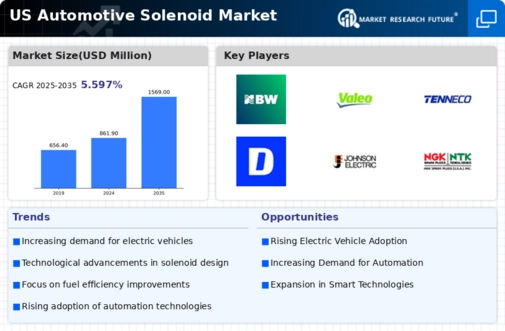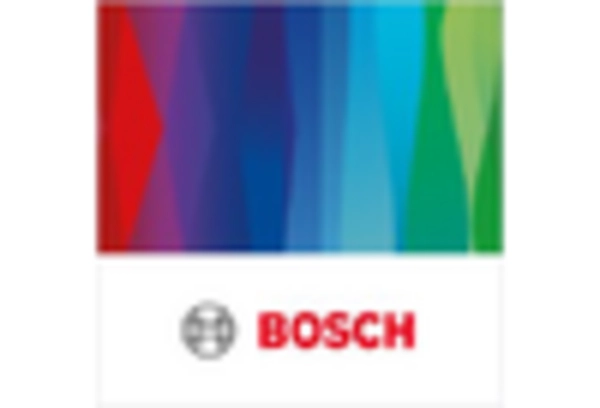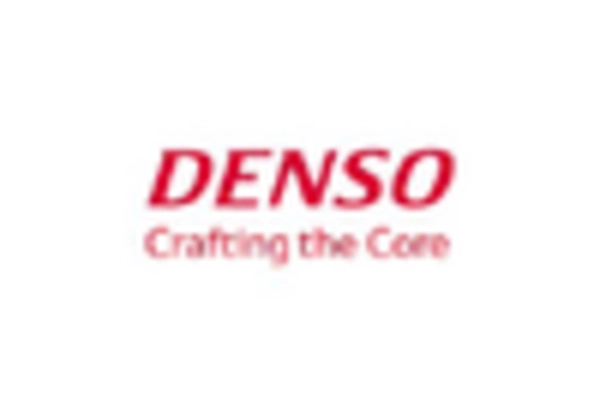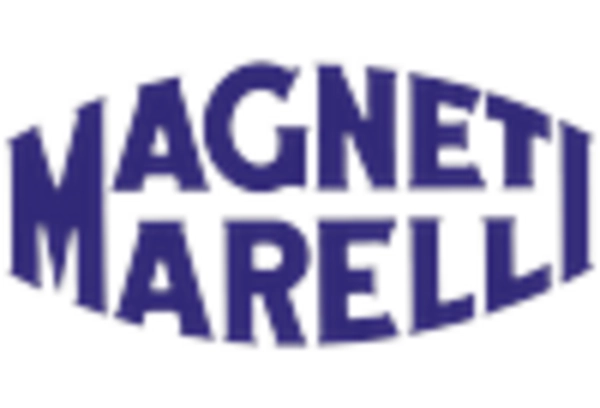Expansion of Aftermarket Services
The automotive solenoid market is also driven by the expansion of aftermarket services, which cater to the growing number of vehicles on the road. As vehicle ownership increases, the demand for replacement parts, including solenoids, rises. The aftermarket segment is projected to grow at a rate of approximately 5% annually, indicating a robust opportunity for the automotive solenoid market. This growth is fueled by the need for maintenance and repair services, as well as the increasing complexity of modern vehicles that require specialized solenoid components. The aftermarket sector thus represents a vital driver for the overall market.
Increased Focus on Fuel Efficiency
The automotive solenoid market benefits from the heightened focus on fuel efficiency among consumers and manufacturers alike. As fuel prices fluctuate, there is a growing demand for technologies that enhance vehicle efficiency. Solenoids are integral to various fuel management systems, including fuel injectors and variable valve timing systems. The automotive solenoid market is expected to see a growth rate of around 6% annually as manufacturers invest in solenoid technology to meet consumer expectations for fuel-efficient vehicles. This trend underscores the importance of solenoids in achieving optimal engine performance and reducing emissions.
Growth in Electric Vehicle Production
The automotive solenoid market is poised for growth as the production of electric vehicles (EVs) accelerates. With the increasing adoption of EVs, manufacturers are incorporating solenoids in various applications, including battery management systems and regenerative braking. The EV market is expected to expand significantly, with projections indicating a potential increase in production by over 30% by 2030. This growth presents a substantial opportunity for the automotive solenoid market, as solenoids are essential for optimizing the performance and efficiency of electric drivetrains. As automakers pivot towards electrification, the demand for innovative solenoid solutions is likely to rise.
Rising Demand for Advanced Safety Features
The automotive solenoid market experiences a notable surge in demand due to the increasing emphasis on advanced safety features in vehicles. As manufacturers strive to enhance vehicle safety, solenoids play a crucial role in systems such as electronic stability control and anti-lock braking systems. The integration of these technologies is projected to grow at a CAGR of approximately 8% over the next five years. This trend indicates a robust market for solenoids, as they are integral to the functionality of safety systems. Consequently, the automotive solenoid market is likely to benefit from this heightened focus on safety, driving innovation and investment in solenoid technology.
Technological Integration in Automotive Systems
The automotive solenoid market is influenced by the increasing integration of technology in automotive systems. As vehicles become more connected and automated, the reliance on solenoids for various functions, such as locking mechanisms and transmission control, intensifies. The market is projected to grow as manufacturers seek to enhance vehicle functionality through advanced solenoid applications. The automotive solenoid market is likely to see innovations that improve the reliability and efficiency of these systems, potentially leading to a market growth rate of 7% over the next few years. This integration reflects a broader trend towards smarter automotive solutions.

















Leave a Comment